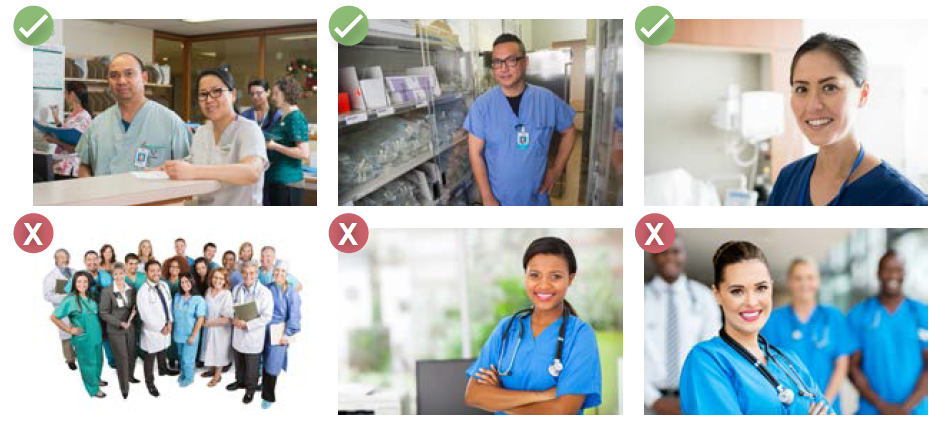To document the patient and health care experience.
We use photography to illuminate people, places and practices. Whether it's of our patients, collaborators or our own health care team, our photography positions people - not the environment - at the centre of the shot. We serve a diverse population in terms of age, gender, identity, family, ethnicity, physical and psychological abilities, fitness and socio-economic status, and our photography should reflect that.
Creative approach
Aim to use photography as a first choice for all imagery, as opposed to illustrations, and refrain from clipart.
Photos should document the patient/staff/medical staff experience in an honest way that shows genuine moments of engagement/collaboration.
Lighting
Using available, natural light is preferable when appropriate to the setting.
Multiple images
When using more than one photo on the same page a mix of all types should be used. Avoid showing photos together that depict the same emotion, camera angle or subject matter.
Styling
Health care professionals
- Select images that reflect our Professional Image Policy and the Health and Safety position on use of lanyards and stethoscopes.
- Avoid images of health care professionals wearing:
- jewellery
- a stethoscope around the neck
- hoodies
- nail polish
- long nails
- Photographs should reflect current Infection Prevention and Control guidelines.

Interior
- When possible, remove potentially distracting and visually unpleasing objects from view before photography is taken. Post-editing in photo editing software is encouraged for objects that can not be removed in person.
- All sensitive information that is legible within an image needs to be blurred or removed in post-editing.
- Visible faces of bystanders without written media consent are required to be blurred for privacy laws.
Exterior
- Images should ideally be captured outside of peak-patient hours with a limited amount of bystanders and vehicles.
- All vehicle license plates are required to be blurred.
- Visible faces of bystanders without written media consent are required to be blurred for privacy laws.
- Visually busy environments with distracting and unnecessary elements should be captured strategically.
- Post-editing in photo editing software is encouraged for objects that can not be removed in person.
External imagery
In the event that original photography does not exist to help tell a specific story, graphics or stock photography can be used. Always abide by usage rights from the stock image provider and ensure you are fully licensed for every graphic or multi-media element you use in all projects.
Contact Communications and Public Affairs at communications@fraserhealth.ca for more information.
Media consent
Written permission requesting consent from clients, patients, family members and health care professionals is required for those whose image, voice, comment or testimonial is recorded for use by Fraser Health. Download the media consent form.
